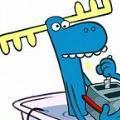-
Posts
7046 -
Joined
-
Last visited
-
Days Won
148 -
Feedback
100%
Adolf Hamster last won the day on October 21 2023
Adolf Hamster had the most liked content!
Profile Information
-
Guns
F2000 & aksu aeg's, m4, mg42 and aksu hpa's
-
Loadouts
whatever works! (smersh, smersh works)
Recent Profile Visitors
97173 profile views
Adolf Hamster's Achievements
-
 Cannonfodder reacted to a post in a topic:
Public webbing walk?
Cannonfodder reacted to a post in a topic:
Public webbing walk?
-
 Tackle reacted to a post in a topic:
Public webbing walk?
Tackle reacted to a post in a topic:
Public webbing walk?
-
whilst i do suspect that you probably won't get much more than some funny looks from folk you encounter it's wise for us to assume in our advice that the worst case scenario of running into the kareniest karen who ever karened calling the grumpiest cop who ever grumpied right as the daily mail and guardian corporate team hike stumbles across the scene. and as a community it'd look a hell of a lot better for us if we could at least show we strongly discouraged such behavior, no different than the "i'm 12 how do i get a black gun for my freinds to use round the estate don't worry we'll be sensible" posts.
-
 Adolf Hamster reacted to a post in a topic:
The 'How Did Your Airsoft Day Go? Thread
Adolf Hamster reacted to a post in a topic:
The 'How Did Your Airsoft Day Go? Thread
-
 Tackle reacted to a post in a topic:
Public webbing walk?
Tackle reacted to a post in a topic:
Public webbing walk?
-
 HZR13 reacted to a post in a topic:
What to bring?
HZR13 reacted to a post in a topic:
What to bring?
-
 HZR13 reacted to a post in a topic:
Public webbing walk?
HZR13 reacted to a post in a topic:
Public webbing walk?
-
in order of priority: a hearty breakfast water, in a container you can carry and use in-game. spare eyepro good boots gloves, a zinger to the fingernail hurts like hell weather appropriate clothing, heavier can help mitigate the sting of bb's, remember that it will likely get mucky or have to wade through spiky undergrowth. you can whip up a gun and ammo on-site usually even if it means renting if you haven't any battle buddies who can lend, and a spare charged battery is definitely useful even if you'll end up lending it out as often as you use it yourself. spare clothes are wise but only to avoid the joyous occasion that driving home coated in muck yields having to clean the car the next day.
-
i wouldn't bother. if you want the exercise just load up a backpack with whatever you think would be an appropriate weight for your fitness and go hike. if you want to try out how the gear works, then a mere hike won't do it for you as not only will you have plenty of opportunity in-game, but the crouching, ducking, crawling, leaning and other movements will reveal issues that just walking won't.
-

RIP to the SCAR, FN Ceased Production.
Adolf Hamster replied to Chev Chelios's topic in Guns, Gear & Loadouts
Didnt the us marines adopt it or am i mis-remembering? -
 Austeyr reacted to a post in a topic:
S&T/AGM MG42 Bipod failure!
Austeyr reacted to a post in a topic:
S&T/AGM MG42 Bipod failure!
-
Yeah the split gearbox design is aoe problem central, i very quickly gave up on it running as an aeg. It became a testbed for shenanigans for a while until i eventually had a polarstar jack spare and a nozzle long enough to turn down to suit. Fixed the mag issue by heretically grafting a mount to fit an m249 box mag But even then it was just too big and cumbersome to be useful in game so i gave up on it.
-
 Adolf Hamster reacted to a post in a topic:
Rifle 6mm, No.9, Mk. EM-2
Adolf Hamster reacted to a post in a topic:
Rifle 6mm, No.9, Mk. EM-2
-
Indeed, dropped mine and it bent like a bannana, took a while to straighten it back out and run 2 big bars on the inside of the reciever to reinforce it. Fella i sold it to also recognised them as being made of pasta
-
 rsvpiper reacted to a post in a topic:
S&T/AGM MG42 Bipod failure!
rsvpiper reacted to a post in a topic:
S&T/AGM MG42 Bipod failure!
-
i recall having a similar failure, think i tapped through and ran a bolt through, iirc the head of the bolt restricted the amount it could tilt but that just meant it was easier to leave the gun sitting on its own. surplus might be an option, think some of the later/foreign adaptions of the platform would be sufficiently compatible and not have the "ww2 german" tax.
-
 MSSNAFU reacted to a post in a topic:
Rifle 6mm, No.9, Mk. EM-2
MSSNAFU reacted to a post in a topic:
Rifle 6mm, No.9, Mk. EM-2
-
yeah my meaning was that if you've got the skills and equipment to put together the em2 then that could translate to for example making a lebel shaped wrapping for a vsr or that kind of thing. but that would make every project different with presumably its own challenges.
-
 MSSNAFU reacted to a post in a topic:
Rifle 6mm, No.9, Mk. EM-2
MSSNAFU reacted to a post in a topic:
Rifle 6mm, No.9, Mk. EM-2
-
 MSSNAFU reacted to a post in a topic:
Rifle 6mm, No.9, Mk. EM-2
MSSNAFU reacted to a post in a topic:
Rifle 6mm, No.9, Mk. EM-2
-
there might be a model, maybe a commission basis kind of thing especially if you're game to build whatever gun the client wants rather than specifically an em2, that way the market becomes "anyone who'd buy a custom gun for £££" rather than "people who'd buy a custom em2 for £££" ofc that would involve every project pressing the reset button on all the design and development work, so the hours involved in that are going to up the bill and you might not want to go through it again, but it might also mean being able to take shortcuts if the particular order can use modified doner(s) rather than an entire scratch build.
-
The first step would be to work out what it would cost you to build, rolling in the lessons learned from making your first one. I suspect that that cost would be pretty steep, and unfortunately the market will probably be smaller than it appears. The number of people who will say they'd pay £££ for a high quality unicorn and the number of people who would actually follow through when the time comes wont be the same. That isnt to say you shouldnt do it, because it is cool af and looks like you're making a proper quality product. I am absolutely here for anything that dilutes the pool of ar derivatives.
-
 Adolf Hamster reacted to a post in a topic:
Rifle 6mm, No.9, Mk. EM-2
Adolf Hamster reacted to a post in a topic:
Rifle 6mm, No.9, Mk. EM-2
-

If you could change the joule limit, would you?
Adolf Hamster replied to Gunboat Diplomat's topic in General Discussion
you bring what you're good at to the game. some people are good at sneaking, some are good at running about, some can think like their enemy, and some can open up the clockwork nightmare that is an airsoft gearboxx and actually improve it. so yes, getting fitter or learning to hide better is going to help your game, but so is being able to hit people at ranges they can't hit you. none of these are any more of less valid ways of gaining an edge. -
 Adolf Hamster reacted to a post in a topic:
If you could change the joule limit, would you?
Adolf Hamster reacted to a post in a topic:
If you could change the joule limit, would you?
-

If you could change the joule limit, would you?
Adolf Hamster replied to Gunboat Diplomat's topic in General Discussion
Hops are good, but not alone. I seperate "range" from "practical range". The former is merely the ability to lob rounds far whereas the latter is actually hitting what you're aiming at more often than not. Yes raw joules will increase the range on their own, but how much of that you'll actually be able to utilise is a very different story. A well dialled in gun with good ammo is going to be effective in far more situations than a leaky mess lobbing bulldog .12's. The chase for accuracy may seem pointless to some, but my experience is it does unlock opportunities. Yes most airsoft pews are accurate to "minute of bad guy" but how often is said guy standing out in the open waiting to be hit? The ability to hit a head, or a hand, or a leg poking out of cover, or reliably post rounds through a small opening makes more difference than how much smackdown said rounds have if said smackdown happens once a mag rather than on command. Of course this is all assuming that actually hitting the target yeilds results, unfortunately airsoft is infested with poor quality targets and even a broadside from a 40-mike of hpa'd plastic extruder can be ignored by those clad in sufficient plot armour. -

If you could change the joule limit, would you?
Adolf Hamster replied to Gunboat Diplomat's topic in General Discussion
The angle myself and some others are aiming for with our dreamworld scenarios would be to bring some diversity to the field by giving pews some minor flavour of their real world utility. Eg why lug around a heavy support gun when your stuck at the same effective ranges as someone with a featherweight m4 and box mag. But to re-stress this is an entirely hypothetical dream world where people play fair. And frankly i'd take a flat 0.5j legal limit and enforced 2-tones if it came with a magic spell that would make everyone play fair. Can be fun to dream though. -

If you could change the joule limit, would you?
Adolf Hamster replied to Gunboat Diplomat's topic in General Discussion
I think it would be a site dependant thing. A site with wide open fields/sightlines could afford a higher general level if managed well. If we throw out any realistic concerns and assume people always stick to the rules and judge things like med correctly free from accidental or intentional breaches i'd work along the lines of: 1j for pews to be used point blank, so cqb sites would have that as a flat peak. So your subguns, shotguns, handguns etc all fall into this category. Up to 1.5j for "assault" style pews outdoors, but with an med to ensure the impact owchie is 1j (i cba doing the math but lets assume it works out that ~10m on 0.48's sees them dropped to 1j) Up to 2j for "battle" rifles, same as before with a higher med calculated to our 1j owchie standard and the requirement that you need to be carrying a bulkier pew to justify it, like a fal or scar h. This would apply to big support guns, but you cant just slap a drum into an arp9 you gotta be lugging around a pkm or fn mag to join that party. Up to 3j for bolty, again you're gonna be landing a chunky med. Those would be maximums, and our hypothetical situation would have sites adjusting limits up/down based on their field characteristics so a dense woodland site might be running flat 1j if the terrain prevents people engaging at any major distance. The idea is that you arent getting hit by anything higher than 1j. Of course this is firmly rooted in a dreamland and in reality such a system would fail spectacularly given even benign isntances like people popping up right infront of a hedge as they pull the trigger on a farther target let alone that sites still dont know the difference between fps and joules and before we acknowledge the existence of the kickingmustangs of this world. In reality i'd be more inclined to go for a flat limit until sites learn how to understand and police energy limits well given everyone shows up with different ammo weights and different gun types, then maybe we could introduce complexity. -

Macks airsoft dreamers of the week thread
Adolf Hamster replied to Mack's topic in General Discussion
Those 2 things seem mutually exclusive to me.....








